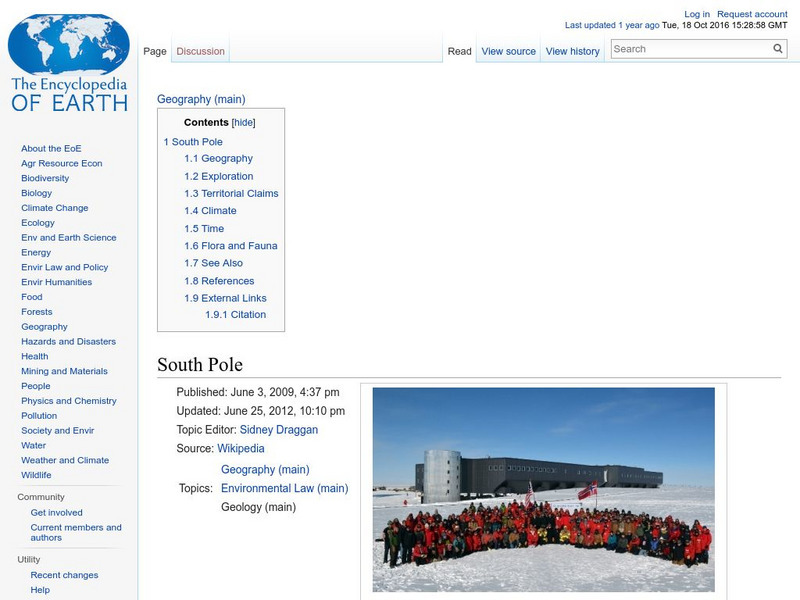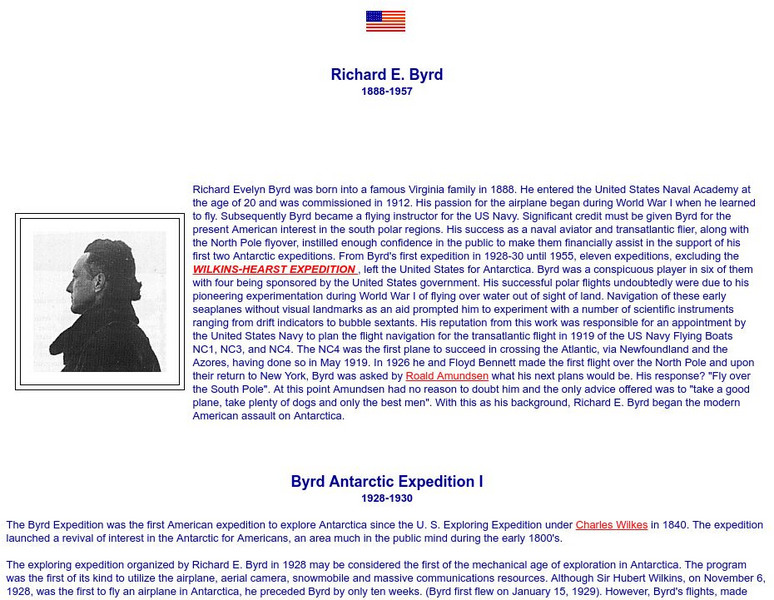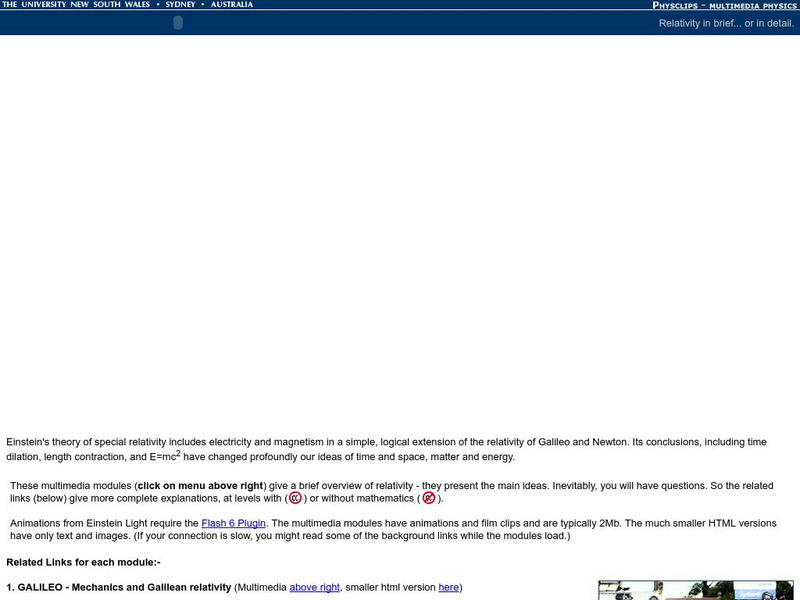American Museum of Natural History
American Museum of Natural History: Race to the End of the Earth
Multimedia-rich exhibition documents the race, in 1911, to be the first to reach the South Pole. Two teams undertook the perilous journey, one British, led by Robert Scott, and one Norwegian, led by Roald Amundsen. With digital dioramas,...
CNN
Cnn: Buzz Aldrin Evacuated From South Pole
Buzz Aldrin, a former astronaut who walked on the moon, was evacuated from the South Pole after his medical condition deteriorated, according to a release.
Other
South Pole: Roald Amundsen
This site is on Amundsen (1872-1928 CE), the leader of a Norwegian expedition, races Robert Scott's group to the South Pole.
National Science Foundation
National Science Foundation: u.s. South Pole Station
The resource explores the National Science Foundation's Amundsen-Scott South Pole Station. The interactive activity consists of a video tour, illustrations, related resources, and a webcam.
Other
The North Pole: Christmas Around the World
A look at how world countries celebrate the different traditions of the Christmas season.
Encyclopedia of Earth
Encyclopedia of Earth: Geography: South Pole
Information about the Geographic South Pole. Explains how it is defined, the marker (which must be adjusted each year due to ice movements) that identifies its location, and 'other' South Poles, i.e., the Ceremonial South Pole and the...
University of Wisconsin
The Why Files: Energy at the Earth's Poles
A resource to help understand how the amount of energy at the Earth's poles affects polar conditions.
The Newberry Library
Newberry Library: Art and Exploration of the Poles
Resource with lesson and primary source documents examines the connections between exploration of the North and South Poles and their visual representation.
Other
Simple Science: Hole in the Sky
Learners explore images of atmospheric ozone levels over the South Pole. The resource has students determine the months of lowest ozone levels and changes in ozone levels since 1979. The activity has an interactive online version and a...
Other
South Pole: Richard E. Byrd (1888 1957)
This article profiles Admiral Richard E. Byrd (1888-1957), the American naval officer and Antarctic explorer.
Royal Geographical Society
Royal Geographical Society: Antarctica: Extreme Wilderness
Information, activities and images of Antarctica including a number from Scott's expedition to the South Pole.
Woods Hole Oceanographic Institution
Polar Discovery: Compare the Poles
A detailed comparison of many aspects of the two polar regions. Includes physical features, seasons, weather, types of ice, plants and animals, human population, and climate change.
Australian Broadcasting Corporation
Australian Broadcasting Corporation: News in Science: Double Eye Vortex at Venus' South Pole
From ABC News in Science, this article explores findings related to the "double-eye vortex" discovered hovering above Venus' south pole.
Science Buddies
Science Buddies: The Strength of an Electromagnet
Has anyone ever told you that you have a magnetic personality? Have you ever heard that opposites attract? These common phrases are both based on the properties of magnets and magnetic electricity. In this science fair project, learn how...
Other
The Antarctic Sun: News About Antarctica
Latest headline scientific news of theworkbeing done in the Antarctic, and stories of the peopleliving there.
NASA
Nasa: Climate Kids: Polar Temperatures
What is it that maske the North and South Pole so different? Find out here when you learn about the climates of the poles
Smithsonian Institution
National Museum of Natural History: Ocean Portal: Life at the Poles
The poles of the earth are often grouped together, however, they are very different. This article is a companion to the exhibit at the Smithsonian. You will learn about adaptations that organisms must make and ways that we affect the...
Alabama Learning Exchange
Alex: The Equator and the Poles
This lesson provides hands-on activities that will teach students about the poles and the equator. Students will be labeling a globe, recreating a globe within the classroom, and researching information on the Internet.
ClassFlow
Class Flow: Parts of the Globe
[Free Registration/Login Required] This flipchart explores the vocabulary of studying the parts of the globe: north pole, south pole, equator, longitude, latitude, etc.
University of New South Wales (Australia)
University of New South Wales: Einstein Light
Einstein Light highlights the Theory of Special Relativity and related topics. Learn how Galileo, Maxwell, and Einstein contributed to our knowledge of relativity, electricity, magnetism, and time by watching fun, interactive modules.
Other
Antarctic E Mail Social Studies Lesson
Why would you ever want to go to Antarctica? This lesson plan allows the students to imagine what life would be like at the bottom of the earth. The teacher can then e-mail the South Pole Observatory for answers to their questions.
TED Talks
Ted: Ted Ed: Lee Hotz: Inside an Antarctic Time Machine
In this video, Lee Hotz describes research into greenhouse gas emissions and global climate change taking place at the South Pole in Antarctica. [9:46] Includes a brief quiz and a list of additional resources to explore.
TED Talks
Ted: Ted Ed: The Arctic vs. the Antarctic
Camille Seaman describes how enterprising people and organisms have found ways to reside around both poles despite the frigid temperatures. [4:24]
Enchanted Learning
Enchanted Learning: Zoom School: Antarctica
Learn some amazing facts about the coolest place on Earth, Antarctica. Explore a map and geography, science, animals, explorers, jokes, and more. Also contains a quiz to take.




















